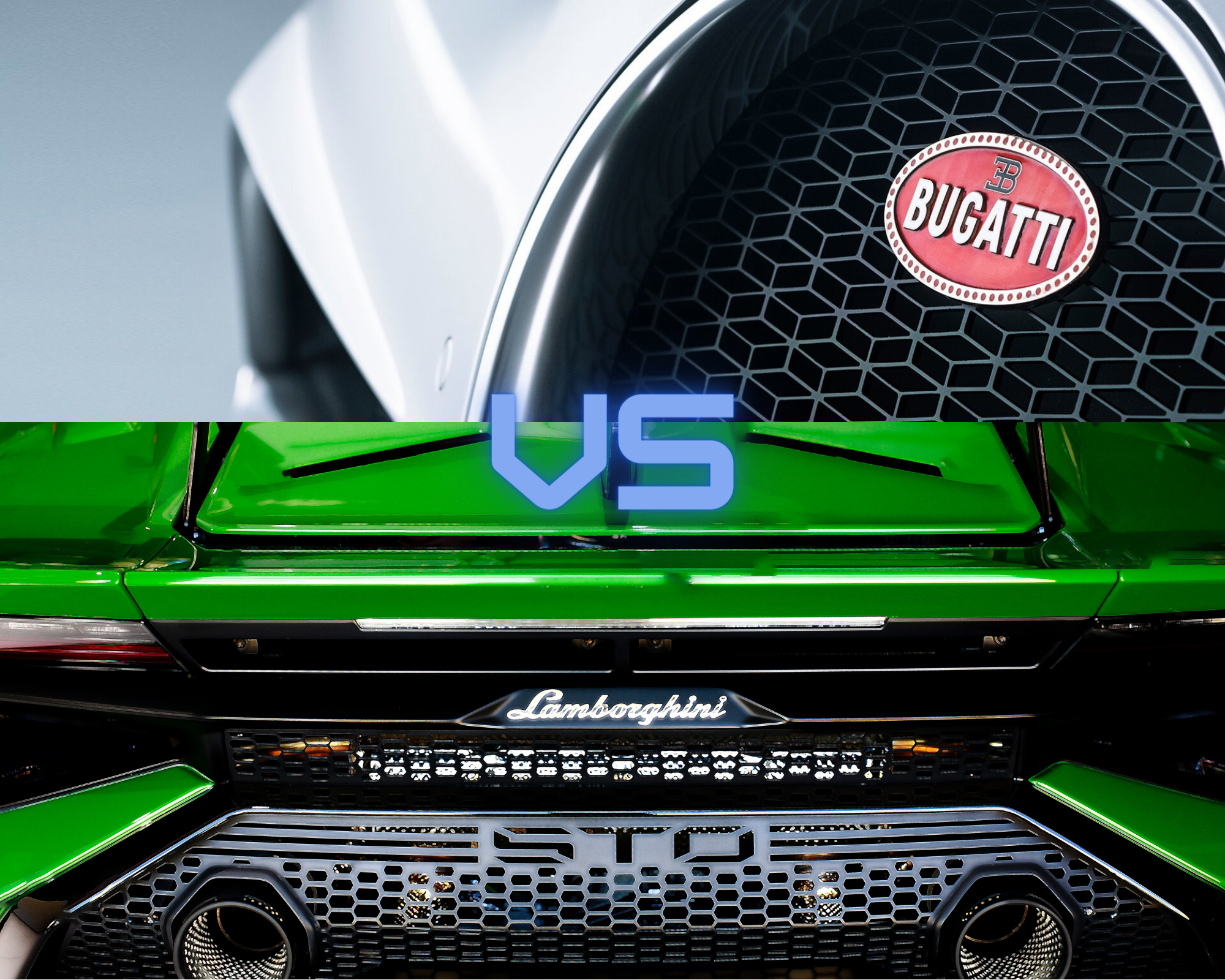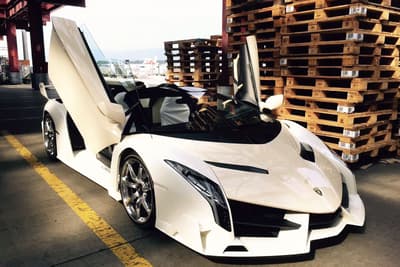For any automobile aficionado, the names Bugatti and Lamborghini bring to mind images of unparalleled speed, iconic design, and a symphony of roaring engines. These two manufacturers have been at the forefront of automotive excellence, each carving out their unique spaces in the world of supercars. But which one is better? Let’s delve deep into the ethos, mechanics, and design philosophies of both brands to better understand their offerings.
History & Ethos
Bugatti
Born in 1909, Bugatti is steeped in a rich history of luxury, performance, and craftsmanship. Founder Ettore Bugatti had a vision of creating cars that combined aesthetics with mechanics, a principle evident in models like the Type 35 racer or the Royale. Today, Bugatti remains true to this ethos, producing machines that push the boundaries of speed while maintaining an unwavering commitment to luxury.
Lamborghini
Ferruccio Lamborghini founded the brand in 1963 with the intent of producing a refined grand touring car to compete against established marques. This Italian brand quickly became synonymous with flamboyant design and powerful engines, epitomized by models such as the Miura. Lamborghini’s are often seen as bold statements, blending art with high-performance engineering.
Is a Bugatti faster than a Lamborghini?
![]()
Yes, when considering the top models from each brand, Bugatti typically holds the edge in terms of top speed. Let’s compare some models to illustrate:
- Bugatti Chiron Super Sport 300+: In 2019, the Bugatti Chiron Super Sport 300+ became the first production car to break the 300 mph barrier, achieving a top speed of 304.773 mph (490.484 km/h).
- Lamborghini Aventador SVJ: One of Lamborghini’s fastest models, the Aventador SVJ, has a top speed of around 217 mph (350 km/h).
| Car Model | Top Speed (mph) |
| Bugatti Models | |
| Bugatti Veyron Super Sport | 267.8 |
| Bugatti Chiron | 261 (limited for road use) |
| Bugatti Chiron Super Sport 300+ | 304.773 |
| Bugatti Divo | 236 |
| Lamborghini Models | |
| Lamborghini Huracán Evo | 202 |
| Lamborghini Aventador S | 217 |
| Lamborghini Aventador SVJ | 217 |
| Lamborghini Urus (SUV) | 190 |
Bugatti vs. Lamborghini Specs & Performance
Bugatti
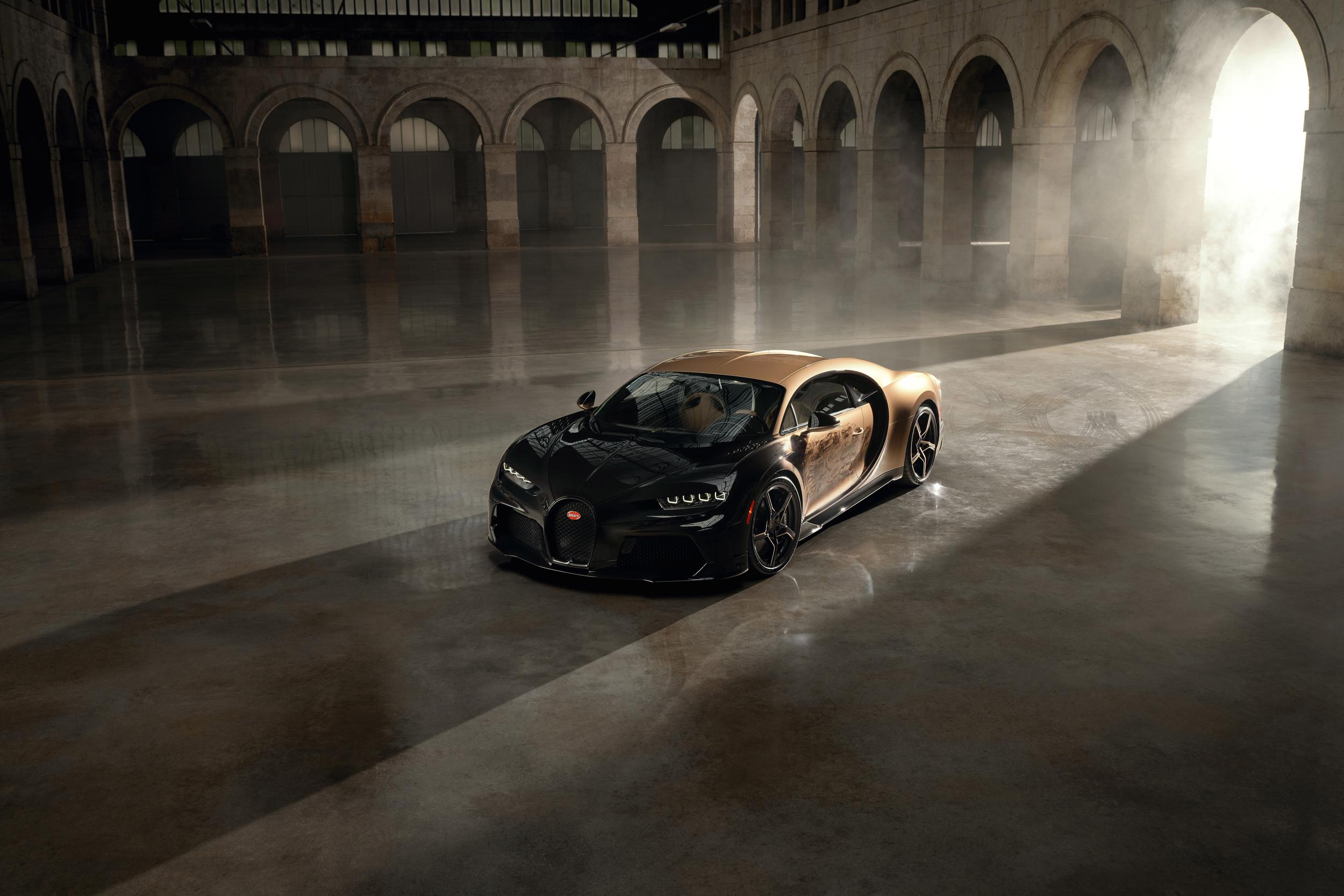
- Bugatti Veyron Super Sport: This groundbreaking model is powered by a quad-turbocharged 8.0-liter W16 engine, generating 1,200 horsepower and 1,106 lb-ft of torque. This monumental power pushed the Super Sport to a top speed of 267.8 mph, making it, at one time, the fastest production car in the world. Key engineering aspects include a 7-speed dual-clutch transmission and all-wheel-drive configuration, ensuring efficient power transfer to the road.
- Bugatti Chiron: Succeeding the Veyron, the Chiron boasts an even more potent 8.0-liter quad-turbocharged W16 engine, offering 1,479 horsepower. Advanced aerodynamics, which adjust according to speed and driving mode, ensure optimized performance and stability at high velocities.
- Bugatti Divo: While it shares the Chiron’s power unit, the Divo is lighter and has enhanced aerodynamics for better downforce. It’s tuned more for agility and cornering rather than sheer straight-line speed, which is evident in its lateral acceleration of 1.6 g and its reduced top speed of 236 mph due to higher downforce.
Lamborghini

- Lamborghini Huracán Evo: This model is powered by a 5.2-liter V10, producing 631 horsepower and 442 lb-ft of torque. The Evo features Lamborghini’s LDVI (Lamborghini Dinamica Veicolo Integrata) system, a central processing unit that manages every aspect of the car’s behavior based on external conditions and the driver’s input, ensuring optimal performance.
- Lamborghini Aventador SVJ: The SVJ variant of the Aventador features a naturally aspirated 6.5-liter V12 engine, churning out 759 horsepower and 531 lb-ft of torque. It’s also equipped with Lamborghini’s ALA 2.0 (Aerodinamica Lamborghini Attiva) system, which adjusts aerodynamic elements on the car for either increased downforce or reduced drag, based on real-time conditions.
- Lamborghini Sian: As Lamborghini’s first hybrid, the Sian combines the Aventador’s V12 engine with a 48-volt electric motor to achieve a combined output of 819 horsepower. Unique to the Sian, its hybrid system doesn’t use conventional batteries. Instead, it utilizes a supercapacitor, which is three times more powerful than a battery of the same weight.
Design & Aesthetics
Bugatti
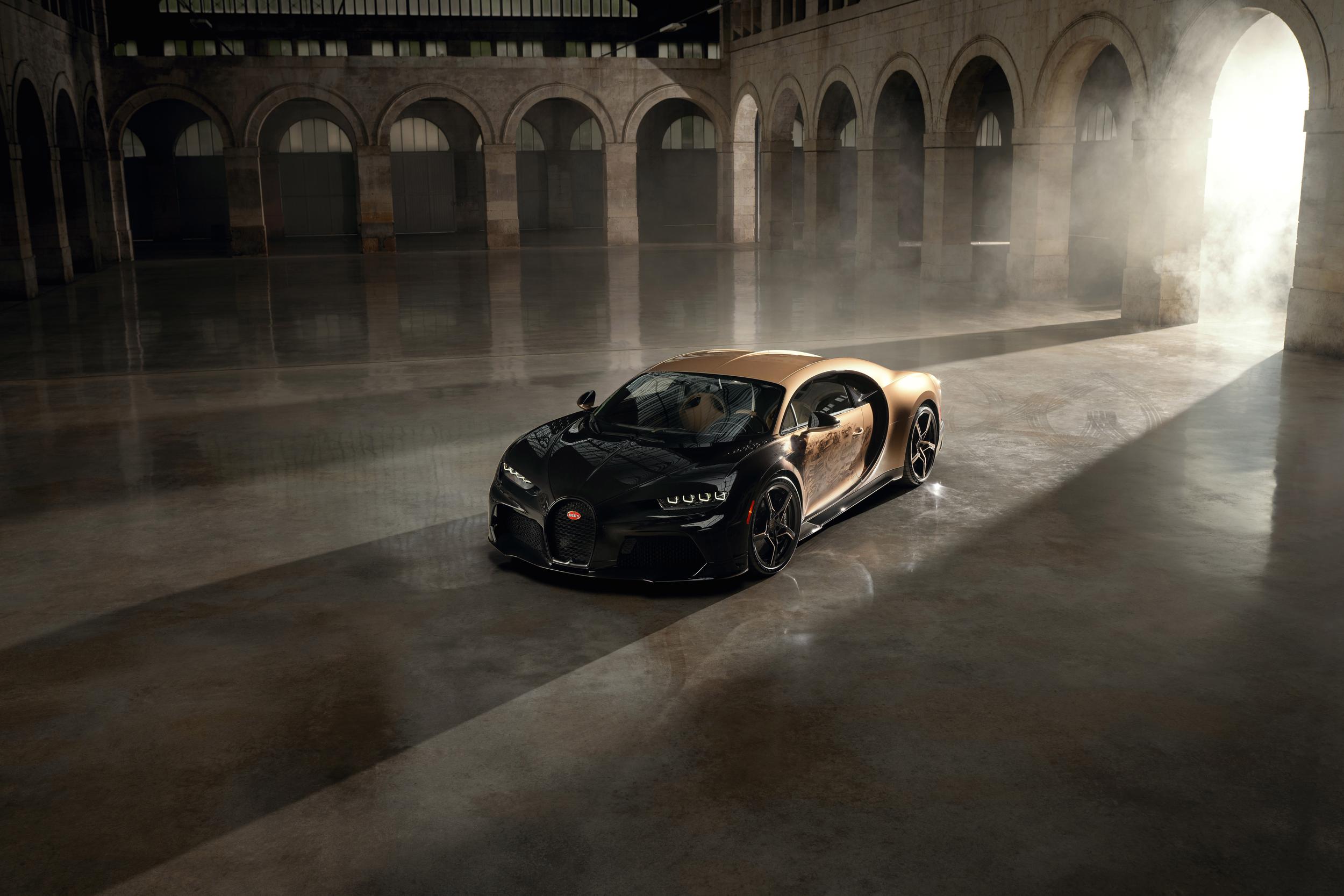
- Bugatti Veyron: The Veyron exemplified a blend of luxury and performance. With its dual-tone exterior color scheme and curvilinear silhouette, it brought to life Ettore Bugatti’s vision of beauty and speed. It showcases a characteristic horseshoe grille, a design element harking back to early Bugatti models.
- Bugatti Chiron: Taking cues from the Veyron, the Chiron introduces more aggressive lines, a distinctive C-shaped curve (known as the Bugatti Line) on its sides, and an elongated rear for improved aerodynamics. The LED light bars on the front and rear further enhance the design, giving it a modern and sophisticated look.
- Bugatti Divo: A limited-production model, the Divo is more track-focused. Its design reflects this with massive air intakes, a larger rear wing, and aggressive aerodynamic appendages. It’s less about classic beauty and more about purposeful, performance-driven design.
Lamborghini
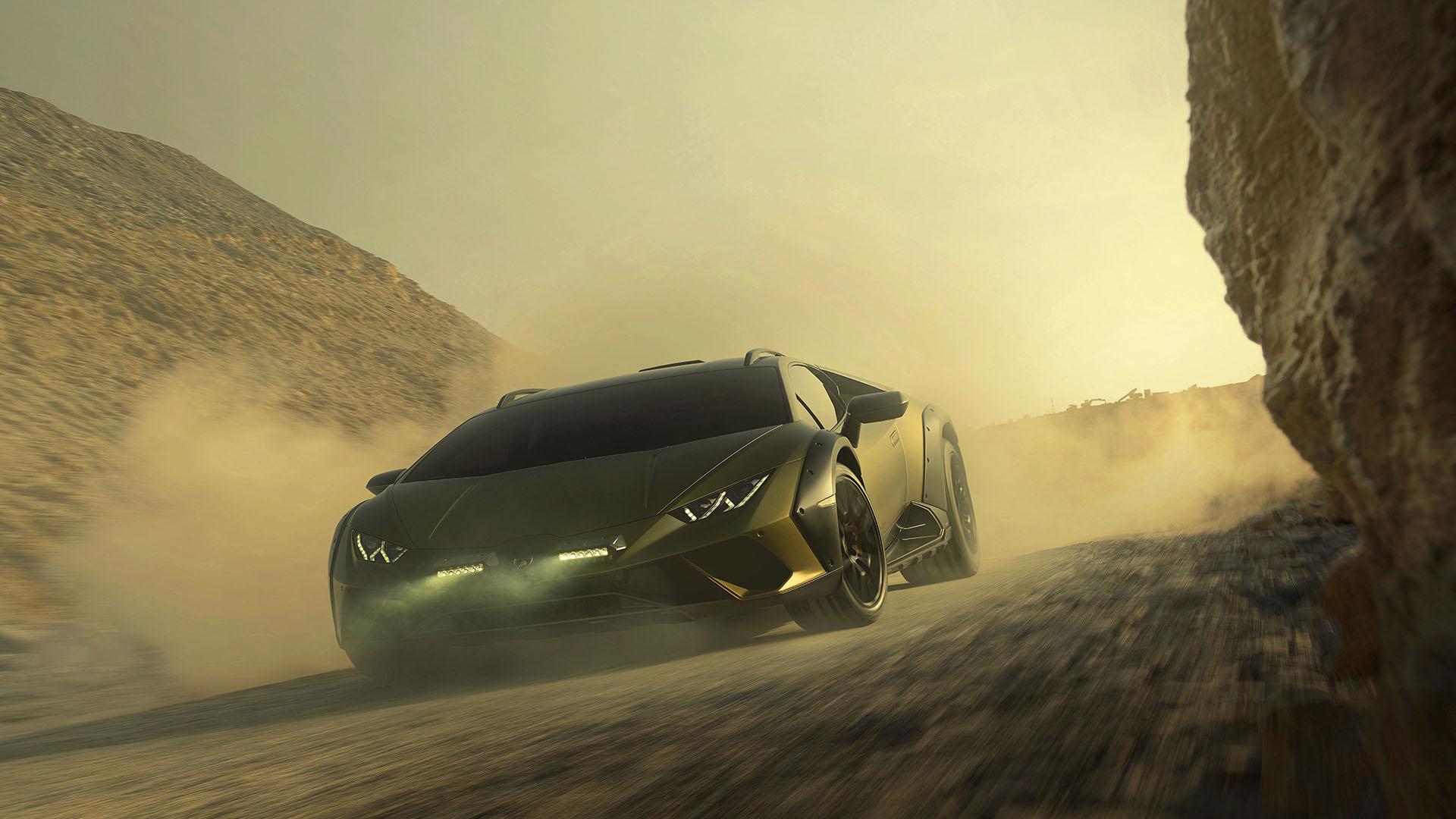
- Lamborghini Huracán: With the Huracán, Lamborghini follows its design philosophy of “form follows function”. Sharp angles, hexagonal shapes, and Y-shaped lights are all consistent with the brand’s lineage. The aerodynamic vents and diffusers aren’t just for aesthetics; they play a pivotal role in the car’s aerodynamic efficiency.
- Lamborghini Aventador: Its sharp, angular design takes inspiration from the F-22 Raptor fighter jet. The long, low-slung profile combined with massive air intakes and a rising rear end exemplify the brand’s commitment to bold, assertive design. The scissor doors, a hallmark of the brand’s V12 lineage, add a touch of drama to its aesthetic appeal.
- Lamborghini Urus: As their foray into the SUV segment, the Urus translates Lamborghini’s design language into a new form factor. It retains the aggressive lines and angles but in a more elevated and broad stance. The Y-shaped elements are present in the lights and air vents, ensuring brand consistency.
Is Bugatti more expensive than Lamborghini?
Yes, generally speaking, Bugatti models are more expensive than Lamborghini models. While both brands operate within the luxury car segment and produce high-performance vehicles, Bugatti’s models typically occupy the ultra-high-end of the pricing spectrum, often being among the most expensive production cars in the world.
For instance:
- A Bugatti Chiron’s starting price hovers around $3 million, while limited models like the Bugatti Divo have prices starting at around $5.8 million or more.
- In contrast, Lamborghini models such as the Huracán and Aventador have starting prices that range from $200,000 to $500,000, depending on the variant.
It’s important to note that these are basic starting prices. Customizations, additional features, taxes, and other variables can influence the final cost. However, on a model-to-model comparison, Bugattis are typically more expensive than Lamborghinis.
Bugatti vs. Lamborghini Price
| Car Model | Starting Price (Approx.) |
| Bugatti Models | |
| Bugatti Veyron Super Sport | $2.7 million |
| Bugatti Chiron | $3 million |
| Bugatti Divo | $5.8 million |
| Lamborghini Models | |
| Lamborghini Huracán Evo | $260,000 |
| Lamborghini Aventador SVJ | $517,000 |
| Lamborghini Urus | $218,000 |
Conclusion
Both Bugatti and Lamborghini offer experiences that are unique and exhilarating in their own right. Choosing between them boils down to individual preferences. If one is seeking sheer velocity coupled with luxury, Bugatti might be the way to go. However, for those who prefer a blend of bold design, raw power, and agile handling, Lamborghini could be the choice.
In the end, both marques, with their storied histories and undeniable contributions to the automotive world, deserve appreciation and respect from car enthusiasts worldwide.

